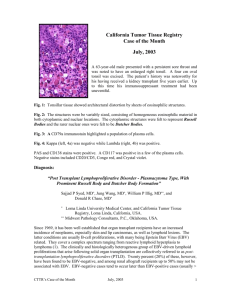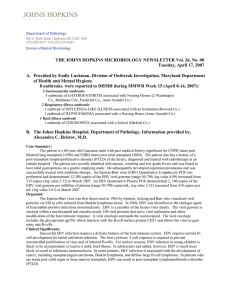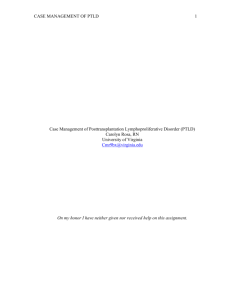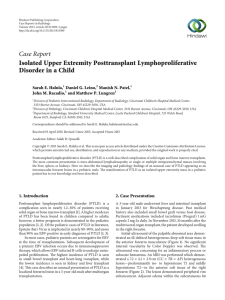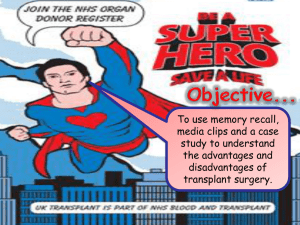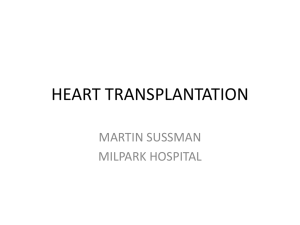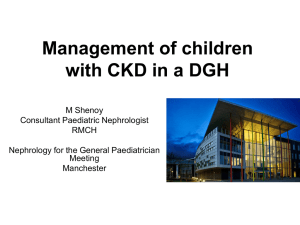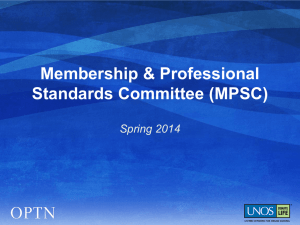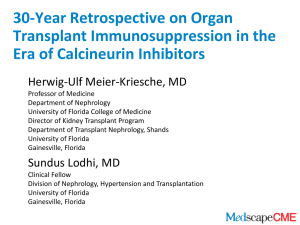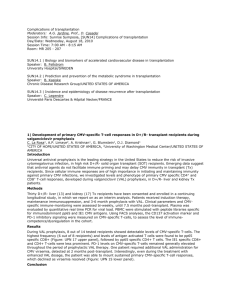Post Transplant Lympoproliferative Disorders (PTLD)
advertisement
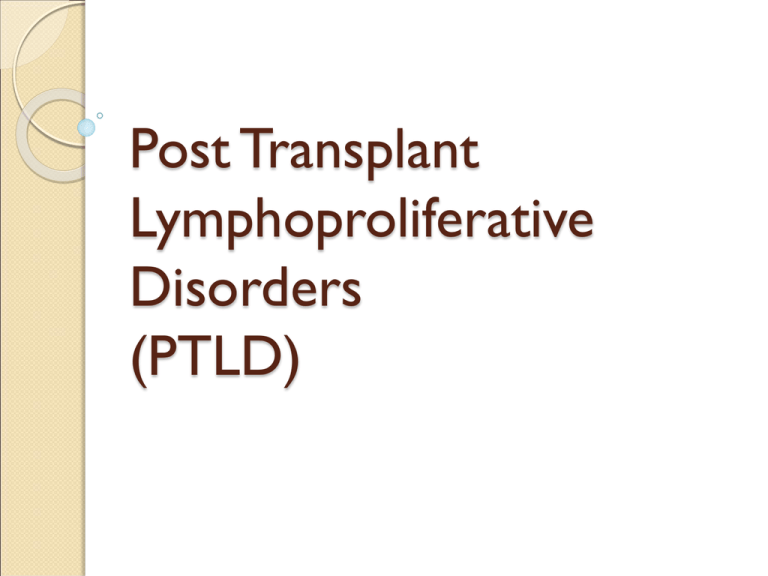
Post Transplant Lymphoproliferative Disorders (PTLD) PTLD PTLD is a group of lymphoproliferative disorders that range from hyperplasias to aggressive non-Hodgkin’s lymphoma PTLD is seen after both solid organ and stem cell transplant 90% of PTLDs are Ebstein-Barr Virus (EBV) positive Incidence PTLD occurs in 1% to 25% of solid organ transplant patients PTLD occurs in < 2% of stem cell transplant patients Incidence is 4 times higher in pediatric transplant patients versus adults Incidence by Type of Organ Transplanted Intestinal Lung transplant 18% 8% Heart 3% Liver 3% Renal <1% Clinical Presentation Some patients are asymptomatic Others may have non specific symptoms Fever Malaise Weight loss May resemble infectious mononucleosis Enlarged tonsils Lymphadenopathy Intestinal Perforation Systems Potentially Involved in PTLD Central Nervous System Bone Marrow Kidneys Liver Lungs Small intestines Spleen Characterization Early PTLD presents within one year following transplantation ◦ 60% develop within one year Late PTLD occurs more than one year post transplant ◦ 30% develop within 1 to 5 years ◦ 10% develop after 5 years Risk Factors EBV seronegative recipient Type of Organ transplanted Type of immunosuppression Simultaneous cytomegalovirus disease Younger Age Male Prevention/Monitoring EBV Surveillance ◦ Monitor EBV-DNA load EBV vaccine ◦ Not standard treatment Anti-viral agents ◦ Questionable value ◦ Agents used include Acyclovir & Ganciclovir Treatment of PTLD Reduction of Immunosuppression therapy Anti-viral agents and IVIG are of limited value Interferon alpha Rituximab CHOP ◦ Doxorubicin, Cyclophosphamide,Vincristine and Prednisone Conclusion Prognosis is poor 5 year survival rates ◦ 25 to 60% High mortality rate Lack of standard treatment References Bakker, N.A., van Imhoff, G.W., Verschuuren, E.A.M., & van Son, W. (2006). Presentation and early detection of post transplant lymphoproliferative disorder after solid organ transplantation.Transplant International, 20, 207-218 Everly, M.J., Bloom, R.D., Tsai, D.E. & Trofe, J. (2007). Posttransplant Lymphoproliferative Disorder. The Annals of Pharmacotherapy, 41, 1850-1858 Faye, A. & Vilmer, E. (2005). Post-Transplant Lymphoproliferative Disorder. Pediatric Drugs, 7, 1, 55-65 Gottschalk, S., Rooney, C.M., & Heslop, H.E. (2005). Post-Transplant Lymphoproliferative Disorders, 56, 29-44 Lee, J.J., Lam, M.S.H., & Rosenberg, A. (2007). Role of Chemotherapy and Rituximab for Treatment of Posttransplant Lymphoproliferative Disorder in Solid Organ Transplantation. The Annals of Pharmacotherapy, 41, 1648-1659 Shroff, R. & Rees, L. (2003). The post-transplant lymphoproliferative disorder – a literature review. Pediatric Nephrology, 19, 369 -377
